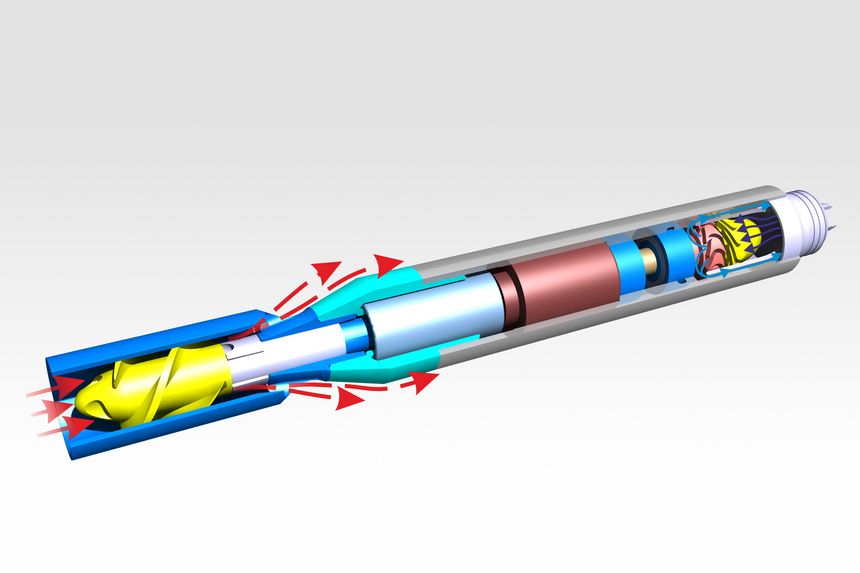
A new technical solution has been found for the intra-aortic balloon pump (IABP) at the Technical University of Vienna (TU Wien). This enables a higher capacity in a smaller format. The technology might also be interesting for other medical applications.
Heart failure is a weakness of the heart muscle whereby the heart is no longer able to supply the body with sufficient blood and oxygen. The causes are manifold and the disease is one of the most frequent causes of death in Germany. A possible therapy is the insertion of a A new technical solution has been found for the intra-aortic balloon pump. This device draws the blood directly from the ventricle of the heart and pumps it through.
Major technical requirements
The technical requirements for intra-aortic balloon pump are at odds with each other:
- one side of the pump must come into direct contact with the blood;
- but the blood may not get into the motor;
A common solution to this problem, for instance, is a permanent release of a sugar solution in order to prevent the blood from flowing into the motor, explains Christoph Janeczek from the Institute of Engineering Sciences and Product Development at TU Wien. He was involved in the development of this innovation.
According to Janeczek, a more elegant solution would be to divide the pump into two completely separate sections. The rotary motion of the motor must be magnetically transferred through the partition wall to the other part of the pump using a magnetic field. Standard solutions are placed either axially or radially.
Vulnerabilities of conventional solutions
The axial placement can be imagined as like two axially cut halves of a rod. Several magnetic poles are placed in the correct positions on the interface. When the pump is activated, the rotation of one part causes the rotation of the other part without any contact. The disadvantage of the axial position is that there is a magnetic attraction of the two parts around the axis. This adds to the load on the IABP motor. Another problem is that there is only a relatively low torque transmission then.
In a radial positioning of the magnetic poles, one part of the coupling engages the other from the outside. This results in a considerable need for more space. However, the torque transmission is greater.
Miniaturization using simple geometry
The research team at TU Wien was able to combine the advantages of these two pump variants – as well as achieve an increase in both performance and a reduction in size. The magnetic effect is achieved using a very effective bimetallic sheath. This incorporates two permanent magnets. The advantage is that their magnetic field is constant. In comparison, electromagnets require an additional electrical supply.
The geometrical design ensures that the coupling has both axial and radial components. This approach enables the miniaturization of the IABP. It is a mere five to six millimeters in diameter. At the same time, torque transmission could be boosted by thirty percent compared to conventional pumps of the same size.
As Janeczek notes, the new technology could also be used to reduce the size of existing IABPs. Furthermore, the company is currently exploring whether the pump could also be used in other medical areas, such as lung support.
The miniaturized magnetic coupling has already been patented. The company is now looking for industrial partners in order to bring these into clinical practice.

More details about the miniaturized magnetic coupling can be found here.
Also interesting:
Substance from Edelweiss flower saves heart attack patients
Researchers discover new gene mutation that causes heart muscle disease
Heart Plaster to Improve Contraction after Heart Attack
